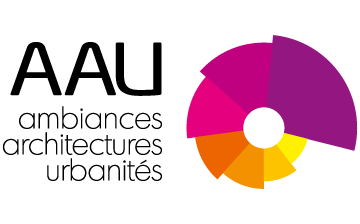L’écologie à l’épreuve de l’architecture fondamentale : repenser les enjeux environnementaux par le projet architectural
Ecology tested in fundamental architecture: rethinking environmental issues through the architectural project.
Eloi Rosius Thèse de doctorat débutée en 2022
Encadrement : Céline Bonicco-Donato (directrice de thèse AAU_Cresson) et Dominique Putz (co-encadrant de thèse AE&CC)
Financement : Contrat doctoral du Ministère de la Culture
FR
RÉSUMÉ :
[fr] L’architecture, comme outil d’intégration au monde qui nous entoure, révèle, influence, et subit les enjeux environnementaux que nous impose notre présence concrète dans ce milieu. Mon sujet de doctorat entend questionner à partir de la discipline éclairée par des apports théoriques pluridisciplinaires (philosophie, psychologie, sciences sociales…) – notre compréhension de l’écologie pour enrichir sa mise en œuvre. Pour ce faire, il s’agit dans un premier temps de réinterroger ce qu’est l’architecture pour entreprendre sa dimension « d’art relationnel » : la problématique de protection et d’intégration réciproque de l’Homme et du monde (Van de Laan, 1989). Le projet architectural ainsi compris permettrait dans un second temps de définir l’enjeu écologique non plus comme une crise paramétrique de la gestion du monde mais comme une crise de la sensibilité au monde (Shepard, 1973) portée par une relation dont l’architecture serait un vecteur, si ce n’est le vecteur principal, en conduisant l’Homme à apprécier l’espace « naturel » auquel il s’intègre.
Pour la production de la discipline, il s’agit d’entendre la problématique relationnelle entre l’Homme et le monde comme une dimension fondamentale. Construire une pensée et une pratique architecturale à même de questionner cette relation en elle-même, dans ce qu’elle porte, à partir notamment des notions de posture (manière d’être au monde de l’architecture) et dispositif (manifestation concrète de cette manière d’être au monde), comme éléments de projet susceptibles de conduire une telle « relation », permettra de repenser de manière concrète les fondements de la pratique dans son ensemble vis-à-vis des enjeux environnementaux.
Pour la réflexion écologique actuelle, il s’agit d’étendre la question de notre relation au milieu au-delà de paramètres physiques à traiter (Latour, 2017), afin de poser par l’architecture et de manière satisfaisante, durable, et non plus opportune, le sujet de l’écologie comme crise de notre place dans le monde : le sujet de l’être et du devenir. En somme, il s’agit de poser la question de ce que l’architecture a à dire à l’écologie. C’est précisément cette attention à notre positionnement dans le monde, dans l’espace « naturel », qui est une recherche esthétique, au sens étymologique (du grec aisthesis : beauté/sensation). Car elle soulève la question d’une qualité sensible de « l’architecture écologique », par la résonance (Hartmut, 2018) de l’architecture (et, à travers sa médiation, de l’Homme) avec le monde (disons son « éco-sensibilité » (Zhong)).
MOTS-CLÉS :
Écologie, esthétique, milieu, nature, homme, projet, sensibilité, atmosphère, résonance, harmonie, poésie, posture, dispositif, figure.
EN
Abstract
Architecture, as a tool for integration into the world around us, reveals, influences and undergoes the environmental issues imposed by our concrete presence in this environment. My doctoral subject intends to question, from the point of view of architecture – once the discipline enlightened by multidisciplinary theoretical contributions (philosophy, psychology, social sciences…) – our understanding of ecology in order to enrich its implementation. To do this, we must first reexamine what architecture is in order to undertake its « relational art » dimension: the problem of protection and reciprocal integration of the human being and the world (Van der Laan, 1989). The architectural project, thus understood, would then allow us to define the ecological challenge not as a parametric crisis of the management of the world but as a crisis of sensitivity to the world (Shepard, 1973) carried by a relationship of which architecture would be a vector, if not the main vector, by leading the human being to appreciate the « natural » space into which he is integrated.
For the production of the discipline, it is a question of understanding the relational problem between the human being and the world as a fundamental dimension. Constructing a way of thinking and an architectural practice capable of questioning this relationship in itself, in what it entails, based in particular on the notions of posture (« way of being in the world » of architecture) and device (concrete manifestation of this « way of being in the world »), as elements of the project likely to lead to such a « relationship », will make it possible to rethink in a concrete way the foundations of the practice as a whole with regard to environmental issues.
For current ecological thinking, it is a question of extending the question of our relationship to the environment beyond the physical parameters to be dealt with (Latour, 2017), in order to pose through architecture and in a satisfactory, sustainable, and no longer opportune manner, the subject of ecology as a crisis of our place in the world; the subject of being and becoming. In short, it is a question of asking what architecture has to say to ecology. It is precisely this attention to our position in the world, in « natural » space, that is an æsthetic research, in the etymological sense (from the Greek aisthesis: beauty/sensation). For it raises the question of a sensitive quality of ‘ecological architecture’, through the resonance (Hartmut, 2018) of architecture (and, through its mediation, of the human being) with the world (let us say its « eco-sensitivity » (Zhong)).
Keywords
Ecology, aesthetics, environment, nature, man, project, sensitivity, atmosphere, resonance, harmony, poetry, posture, device, figure.
